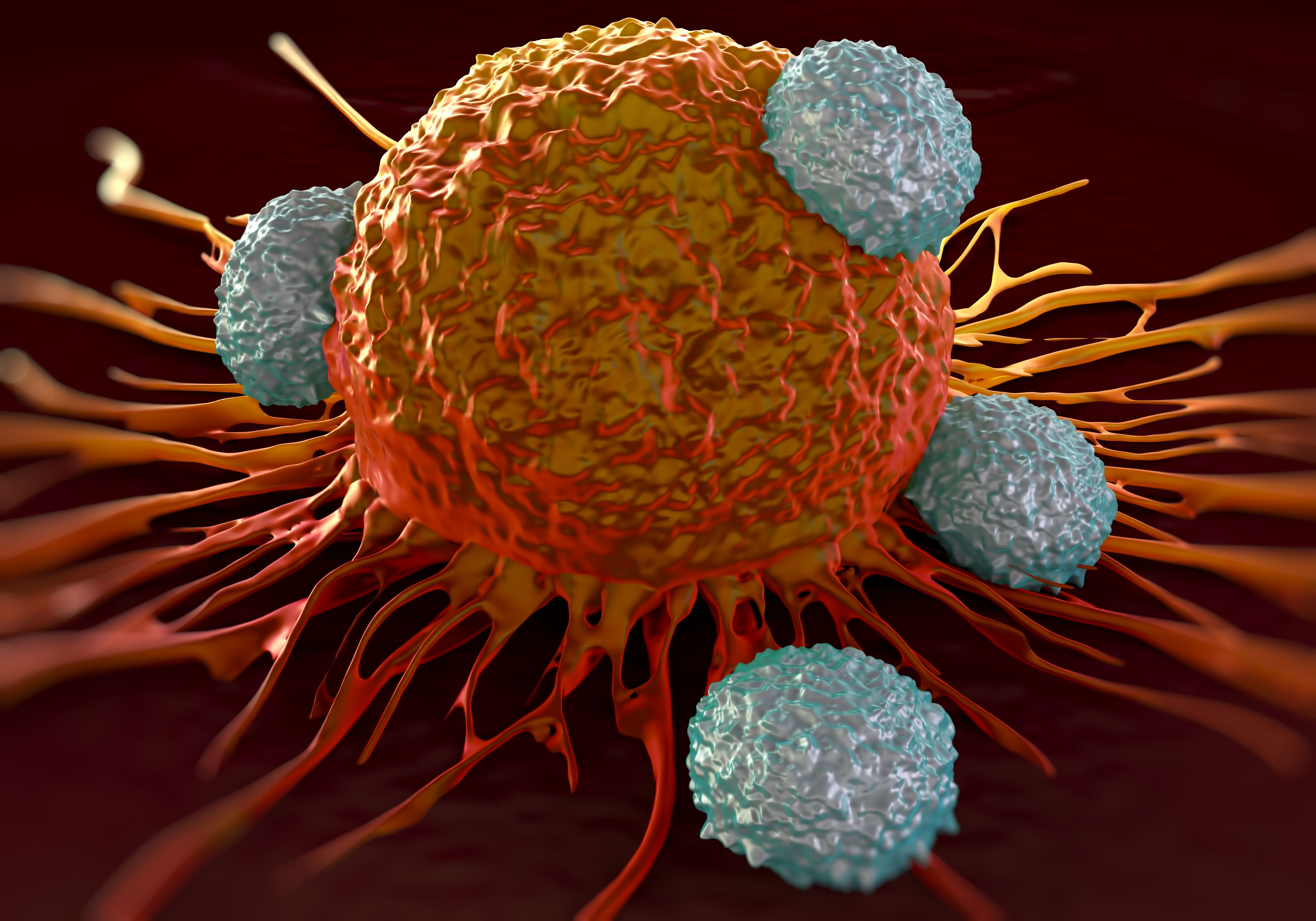Johns Hopkins Medicine researchers have added to evidence that a gene responsible for turning off a cell’s natural “suicide” signals may also be the culprit in making breast cancer and melanoma cells resistant to therapies that use the immune system to fight cancer. A summary of the research, conducted with mice and human cells, appeared Aug. 25 in Cell Reports.
When the gene, called BIRC2, is sent into overdrive, it makes too much, or an “overexpression,” of protein levels. This occurs in about 40% of breast cancers, particularly the more lethal type called triple negative, and it is not known how often the gene is overexpressed in melanomas.
If further studies affirm and refine the new findings, the researchers say, BIRC2 overexpression could be a key marker for immunotherapy resistance, further advancing precision medicine efforts in this area of cancer treatment. A marker of this kind could alert clinicians to the potential need for using drugs that block the gene’s activity in combination with immunotherapy drugs to form a potent cocktail to kill cancer in some treatment-resistant patients.
“Cancer cells use many pathways to evade the immune system, so our goal is to find additional drugs in our toolbox to complement the immunotherapy drugs currently in use,” says Gregg Semenza, M.D., Ph.D., the C. Michael Armstrong Professor of Genetic Medicine, Pediatrics, Oncology, Medicine, Radiation Oncology and Biological Chemistry at the Johns Hopkins University School of Medicine, and director of the Vascular Program at the Johns Hopkins Institute for Cell Engineering.
Semenza shared the 2019 Nobel Prize in Physiology or Medicine for the discovery of the gene that guides how cells adapt to low oxygen levels, a condition called hypoxia.
In 2018, Semenza’s team showed that hypoxia essentially molds cancer cells into survival machines. Hypoxia prompts cancer cells to turn on three genes to help them evade the immune system by inactivating either the identification system or the “eat me” signal on immune cells. A cell surface protein called CD47 is the only “don’t eat me” signal that blocks killing of cancer cells by immune cells called macrophages. Other cell surface proteins, PDL1 and CD73, block killing of cancer cells by immune cells called T lymphocytes.
These super-survivor cancer cells could explain, in part, Semenza says, why only 20% to 30% of cancer patients respond to drugs that boost the immune system’s ability to target cancer cells.
For the current study, building on his basic science discoveries, Semenza and his team sorted through 325 human genes identified by researchers at the Dana Farber Cancer Institute in Boston whose protein products were overexpressed in melanoma cells and linked to processes that help cancer cells evade the immune system.
Semenza’s team found that 38 of the genes are influenced by the transcription factor HIF-1, which regulates how cells adapt to hypoxia; among the 38 was BIRC2 (baculoviral IAP repeat-containing 2), already known to prevent cell “suicide,” or apoptosis, in essence a form of programmed cell death that is a brake on the kind of unchecked cell growth characteristic of cancer.
BIRC2 also blocks cells from secreting proteins that attract immune cells, such as T-cells and natural killer cells.
First, by studying the BIRC2 genome in human breast cancer cells, Semenza’s team found that hypoxia proteins HIF1 and HIF2 bind directly to a portion of the BIRC2 gene under low oxygen conditions, identifying a direct mechanism for boosting the BIRC2 gene’s protein production.
Then, the research team examined how tumors developed in mice when they were injected with human breast cancer or melanoma cells genetically engineered to contain little or no BIRC2 gene expression. In mice injected with cancer cells lacking BIRC2 expression, tumors took longer to form, about three to four weeks, compared with the typical two weeks it takes to form tumors in mice.
The tumors formed by BIRC2-free cancer cells also had up to five times the level of a protein called CXCL9, the substance that attracts immune system T-cells and natural killer cells to the tumor location. The longer the tumor took to form, the more T-cells and natural killer cells were found inside the tumor.
Semenza notes that finding a plentiful number of immune cells within a tumor is a key indicator of immunotherapy success.
Next, to determine whether the immune system was critical to the stalled tumor growth they saw, Semenza’s team injected the BIRC2-free melanoma and breast cancer cells into mice bred to have no functioning immune system. They found that tumors grew at the same rate, in about two weeks, as typical tumors. “This suggests that the decreased tumor growth rate associated with loss of BIRC2 is dependent on recruiting T-cells and natural killer cells into the tumor,” says Semenza.
Finally, Semenza and his team analyzed mice implanted with human breast cancer or melanoma tumors that either produced BIRC2 or were engineered to lack BIRC2. They gave the mice with melanoma tumors two types of immunotherapy FDA-approved for human use, and treated mice with breast tumors with one of the immunotherapy drugs. In both tumor types, the immunotherapy drugs were effective only against the tumors that lacked BIRC2.
Experimental drugs called SMAC mimetics that inactivate BIRC2 and other anti-cell suicide proteins are currently in clinical trials for certain types of cancers, but Semenza says that the drugs have not been very effective when used on their own.
“These drugs might be very useful to improve the response to immunotherapy drugs in people with tumors that have high BIRC2 levels,” says Semenza.
Scientists who contributed to the research include Debangshu Samanta, Tina Yi-Ting Huang, Rima Shah, Yongkang Yang and Fan Pan of Johns Hopkins.
This research was supported by grants from the Emerson Collective Cancer Research Fund, American Cancer Society, Armstrong Family Foundation, the Cindy Rosencrans Fund for Triple-Negative Breast Cancer, the C. Michael Armstrong Professorship of Genetic Medicine at the Johns Hopkins University School of Medicine and a Career Catalyst Research grant from the Susan G. Komen Foundation.
DOI: 10.1016/j.celrep.2020.108073
